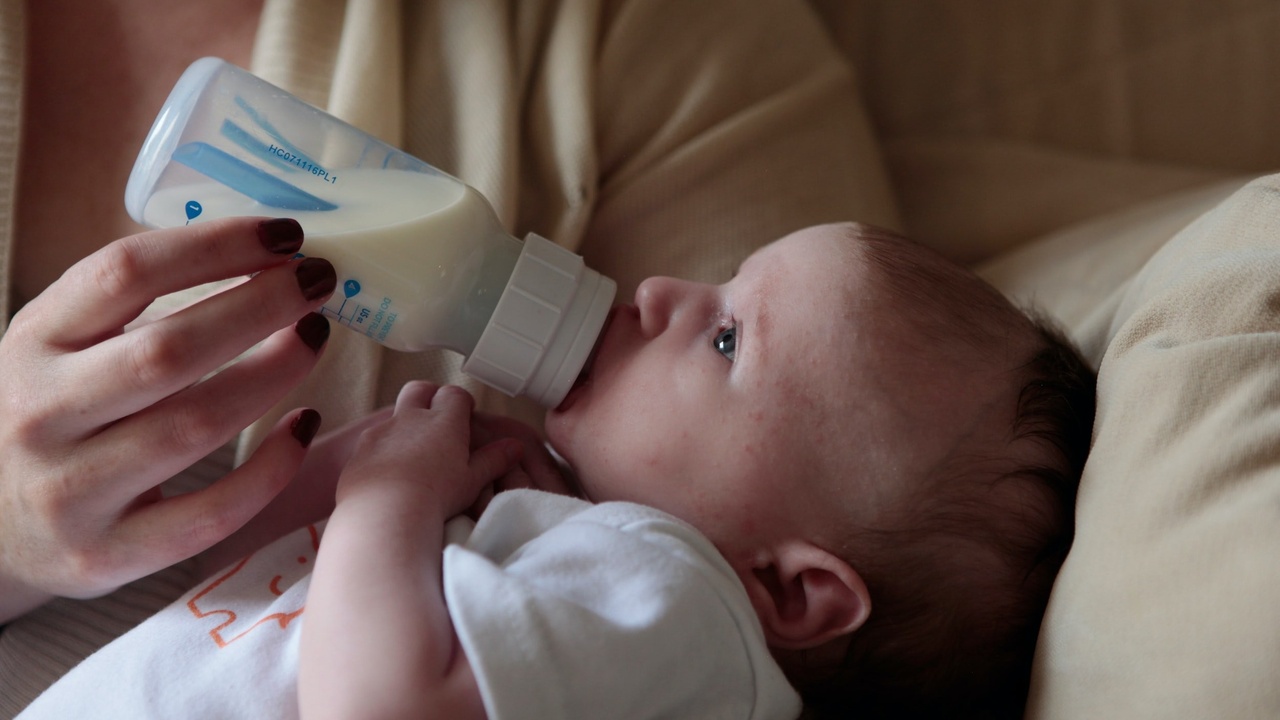Dream Feeding + Baby Sleep
Oct 11, 2022
If you've ever Googled "how to get my baby to sleep longer at night," you may have come across something called a dream feed.
A dream feed is a term coined by baby expert Tracy Hogg to describe a feeding offered to your baby while they’re still asleep—usually between 9 and 10 PM. The idea is to top them up before they wake on their own, with the hope that they’ll sleep longer and give you a longer stretch of rest, too. And honestly? Sometimes it works like a charm.
🎙️Prefer to listen instead? Click here to listen to the podcast episode all about dream feeding on the Cozy Little Convo's Podcast.
What Is a Dream Feed and Should I Try It?
A dream feed can be a real game changer if it works for your little one. But it’s definitely not a one-size-fits-all solution. In some cases, it can actually disrupt your baby’s sleep cycle or cause a full wake-up. The key? Trial and error, mama. Try it for a few nights and observe how your baby responds.
My Experience With Dream Feeds
With my firstborn, I tried dream feeding for about a week. It wasn’t a great fit. She still woke at her usual time for a feed and would have trouble settling back to sleep afterward.
But with my second? Total opposite. I introduced dream feeding when she was around 10 weeks old, and it worked beautifully. She would stay asleep, take the feed easily, and often sleep straight through till morning. It just goes to show how every baby is different.
How to Dream Feed: Step-by-Step
-
Put your baby down to bed around 7–8 PM (or their regular bedtime).
-
Around 9–10 PM, gently pick them up while they’re still sleeping.
-
Offer a feed (breast or bottle—either works).
-
Burp them lightly—I find resting them on your shoulder works well without fully waking them.
-
Place them back in the crib or bassinet. If they wake up a little, you can rock or pat them to help them settle.
Dream Feeding Tips for Success
-
Keep lights dim (or off) to avoid stimulating your baby.
-
Avoid a diaper change unless the diaper is dirty. For older babies, overnight diapers and barrier cream usually do the trick.
-
Don’t stress about burping—especially if your baby is breastfed and not typically gassy. If they seem uncomfortable, try a quick burp and lay them back down.
-
Give it 3–5 days. One night isn’t enough to decide if it works. Trial it consistently and see if it helps lengthen their first stretch of sleep.
How Do I Know If a Dream Feed Is Working?
It’s working if:
-
Your baby takes the feed without waking fully.
-
They sleep a longer stretch afterwards.
-
It fits naturally into your evening and doesn’t cause stress.
It’s not working if:
-
Your baby refuses the feed.
-
They fully wake up and struggle to resettle.
-
They still wake 2–3 hours later and you’re more tired, not less.
Remember—this isn’t a mandatory trick. You don’t have to dream feed to have a great sleeper. It’s just one more tool in the toolbox that might help if it suits your baby.
Need More Sleep Help?
If you’re ready to get serious about better nights, I have step-by-step programs to walk you through sleep teaching in a way that feels right for you—no pressure, no strict schedules, and no one-size-fits-all approaches.
👉 Newborn Sleep Course (0–3 months)
👉 Baby Sleep Course (4–24 months)
👉 Toddler Sleep Guide (2–4 years)
Each program includes guides, downloads, and flexible methods to help you feel supported every step of the way xx
Reference:
Hogg, T., & Blau, M. (2005). Secrets of the Baby Whisperer: How to Calm, Connect, and Communicate with Your Baby. Ballantine Books.
Stay connected with news and updates!
Join our mailing list to receive the latest news and updates from our team.
Don't worry, your information will not be shared.
We hate SPAM. We will never sell your information, for any reason.

